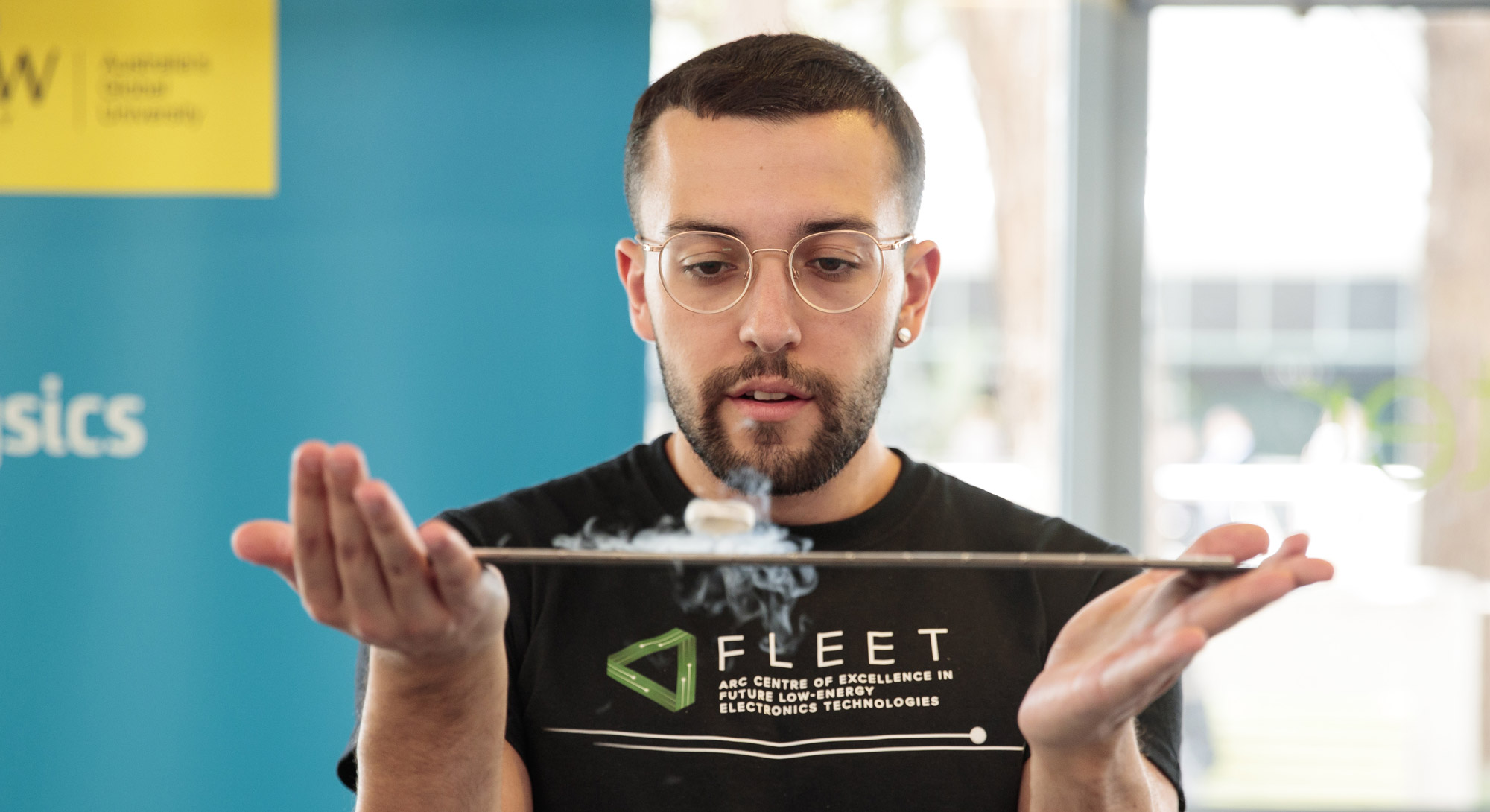
Fleet themes
FLEET's approach is multidisciplinary, combining efforts across condensed-matter, cold-atom physics, material science and nanofabrication
FLEET is pursuing the following research themes to develop systems in which electrical current can flow with near-zero resistance:
RESEARCH THEME 1:
Topological materials
FLEET’s first research theme seeks electrical current flow with near-zero resistance based on a paradigm shift in materials science that yielded ‘topological insulators’.
Topological insulators conduct electricity only along their edges, and strictly in one direction, without the ‘backscattering’ that dissipates energy in conventional electronics.
Read moreRESEARCH THEME 2:
Exciton Superfluids
FLEET’s second research theme uses a quantum state known as a superfluid to achieve electrical current flow with minimal wasted dissipation of energy.
In a superfluid, scattering is prohibited by quantum statistics, so charge carriers can flow without resistance.
Superfluids may be formed by excitons (electrons bound to ‘holes’).
Read moreRESEARCH THEME 3:
Light transformed materials
FLEET’s third research theme represents a paradigm shift in material engineering, in which materials are temporarily forced out of equilibrium.
For example, zeroresistance paths for electrical current can be created using short, intense bursts of light, temporarily forcing matter to adopt a new, distinct topological state.
Read moreThese research approaches are enabled by the following technologies:
ENABLING TECHNOLOGY A:
Atomically thin materials
Each of FLEET’s three research themes is heavily enabled by the science of novel, atomically-thin, two-dimensional (2D) materials.
These materials can be as thin as just one single layer of atoms, with resulting unusual and useful electronic properties.
To provide these materials FLEET draws on extensive expertise in materials synthesis in Australia and internationally.
Read moreENABLING TECHNOLOGY B:
Nano device fabrication
FLEET’s research sits at the very boundary of what is possible in condensedmatter physics.
At the nano scale, nanofabrication of functioning devices will be key to the Centre’s success.
Nano-device fabrication and characterisation links many of FLEET’s groups and nodes with diverse fields of expertise such as device fabrication or measurement.
Read more